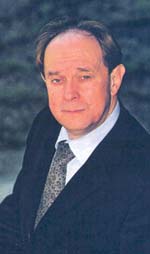

DF: All cultured dairy products need starter cultures. Why is a relaunch of the bulk starter application necessary?
MS: This relaunch is a result of what has taken place the past couple of years at DSM. All acquired companies had their own product range. We wanted to provide cultured dairy product manufacturers with the best strains that each company had to offer. This includes both direct-set and bulk-set forms. The new range includes the basic starter material (acid-producing and aroma-strains) for American-style cheeses such as Cheddar, as well as strains for Grade A products such as cottage cheese, sour cream, yogurt and buttermilk.
DF: Can lastose-intolerant individuals consume cultured dairy products without feeling any side effects? In other words, are cultured dairy products free of lactose?
MS: Well, yes and no. Although most of the lactose in cultured dairy products is broken down to lactic acid by the cultures, there still is some lactose that remains in the finished product. Most lactose-intolerant consumers can handle this small amount of lactose; however, for severely sensitive individuals, it could be too much to handle.
The rapidly increasing demand for low-lactose dairy products presents the dairy industry with a major opportunity to open up a new market segment and make dairy products acceptable to lactose intolerant people. These consumers want to have access to the nutritional benefits of dairy products. DSM offers dairy processors Maxilact®, a lactose-splitting enzyme that efficiently converts lactose into the sugars glucose and galactose. Through this technology, the production of low-lactose milk, yogurts, cottage cheese, spreads and desserts is made possible and practical.

MS: A great deal of research has been done in this area, especially in cottage cheese, as consumer complaints on quality and consistency in cottage cheese are quite high. Researchers have investigated the effect of starter cultures, enzymes and dressing on finished cottage cheese quality.
Basically, there are two types of cottage cheese—small curd and large curd—and they vary significantly in consistency, which is affected by the composition and texture of the curd, the cream dressing, the ratio of the curd to dressing and the interaction between both of them.
To ensure consistency, dairy processors must identify the best time for cutting the curd and manage acid development of the milk in the vat. Indeed, the ingredients are the most important differentiator. Using the right coagulant and starter culture in combination with a reliable process, including the washing of the curd in the vat, helps ensure a consistent, high-quality product with the desired final pH and shelflife. But above all, you must start with the freshest, highest-quality milk in order to product a fresh-tasting, high-quality cottage cheese. If you have bad milk, no ingredient system in the world can turn it into good cottage cheese.
DSM is in the midst of researching technologies to improve dressing quality. Stay tuned.
DF: What is the difference between European and American yogurt?
MS: Indeed there is a difference. The difference is based on the dry matter and the ingredients. For European yogurts, there are actually two main types. Classical European yogurt, from the culture side, contains only two strains, while mild European yogurt also contains other lactobacillus cultures such as acidophilus.
The difference between European and American yogurt starts exclusively with the selection of the starter cultures and continues with some technical or process development, e.g., homogenizing heat treatment, etc. There is also a big difference in the use of stabilizing ingredients and sweeteners. European yogurts use little of either of these, whereas American yogurts tend to be very sweet and contain a variety of stabilizers. European yogurts rely more on cultures and process for stabilization.
DF: Finally, what advancements are taking place in the culture ingredient sector for application in cultured dairy products?
MS: The Grade A cultured dairy product market is one of the greatest opportunities for the U.S. dairy industry, and lends itself to much innovative advancement. For example, look at how far the yogurt category has come in just five years. In the cup sector, there is fruit-on-the-bottom, blended, aerated, extra-creamy and cream-on-top varieties. There are also drinkable and squeezable varieties. For all of these yogurt types, there is a great opportunity to use probiotic strains.
Today it is possible to develop a process and identify an inoculum level that produces a mild yogurt that contains high levels of probiotic bacteria through the end of shelflife—all this, and still at a relatively fast production schedule.
Cultured Dairy Products Conference Scheduled for May 20-21
The International Dairy Foods Association will hold this year’s Cultured Dairy Products Conference on May 20-21 at the Hilton Milwaukee City Center in Milwaukee, Wis. This conference will offer a comprehensive educational program on the latest developments in the cultured dairy market, plus an exhibition to showcase the new technologies, products and services available to manufacturers of yogurt, cottage cheese, cream cheese, sour cream and other cultured dairy products. The two-day event will blend technical programming with the latest in market and consumer research, including new 2002 sales and consumption data from IDFA’s Cultured Products Market Research Project.“This conference comes at an exciting time for the cultured dairy industry, with innovations in packaging and ingredient technologies, popular new products and emerging health claims,” says Cary Frye, IDFA v.p. of regulatory affairs. “In addition, dairy manufacturers need to stay abreast of new regulations, including biosecurity and organic product rules. All of these topics will be thoroughly covered by IDFA’s Cultured Dairy Products Conference.”
The Cultured Dairy Products Conference is designed for a wide variety of professionals in the cultured dairy market, including industry executives, product development personnel, plant managers, R&D/Q.A. professionals and operations staff.
For conference registration information, call 202/220-3557, or visit www.idfa.org.